
I talked about cutting down on food waste last year and now, 12 months on and after lots of experimenting, trial and error, I think I can confidently say that we’re just about there. We’re living an almost completely zero food waste life. Here’s what we do…
Meal planning for a zero food waste life
Ahh, I’ve been preaching on about this for what feels like forever, but it really works! Every Sunday we write out the plan for the week ahead – activities, who’s doing what and crucially, what we’ll be eating. I look in the fridge, see what we have and plan our food accordingly – only buying bits and pieces as needed. It results in some pretty strange concoctions at times but really helps keep us on track with what we have in and what needs eating first.
For a deeper dive into how I plan ahead, take a look at this meal planning post or an example of a typical weekly plan. The nice thing about meal planning, in particular, is that you also tend to save money on food shopping. Leftovers for lunch save pounds each week and inventive meals using what you have in are also fun to prepare.
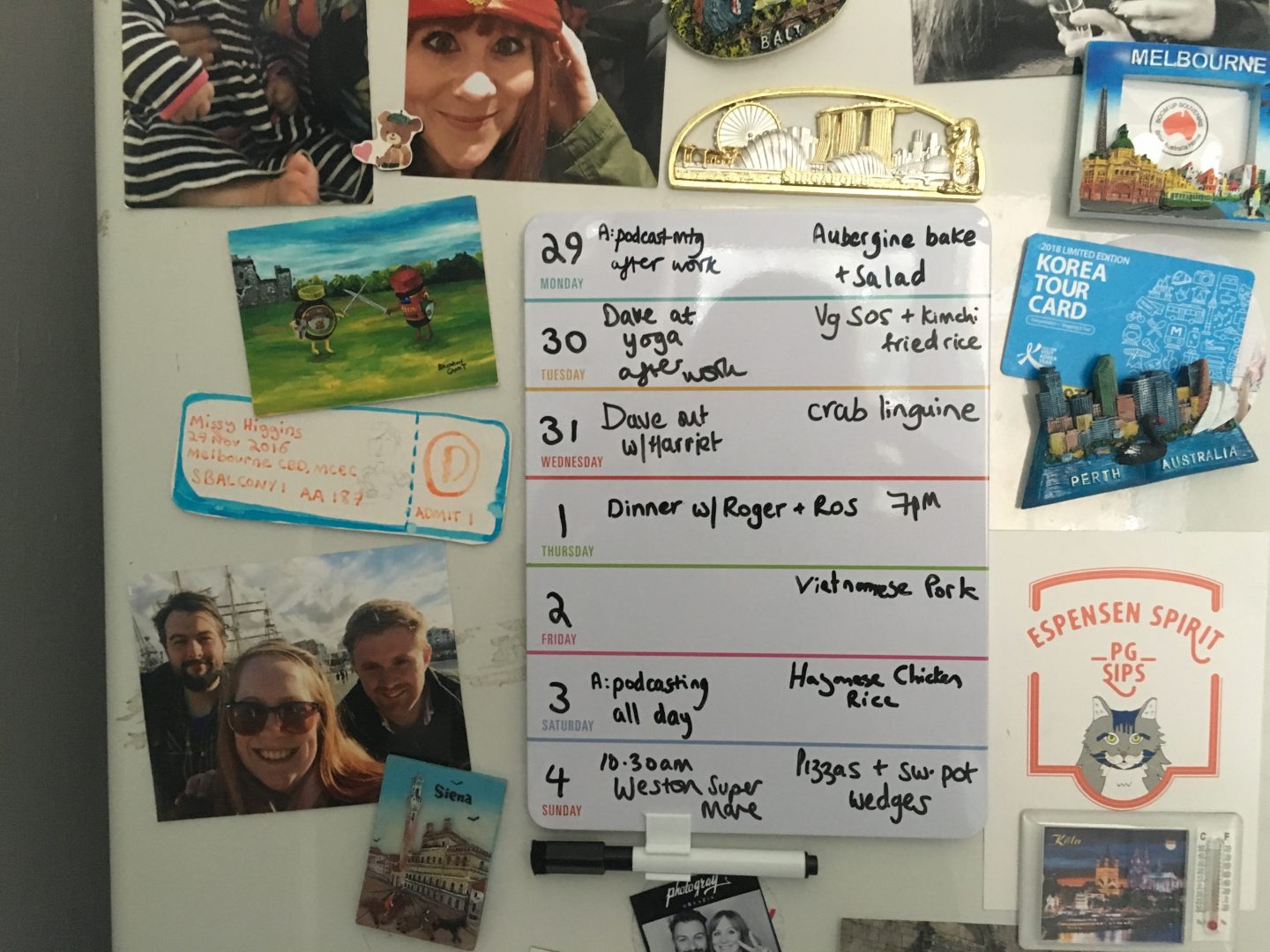
Buy less to begin with!
Sounds obvious I know but the best way to solve the problem is to avoid it in the first place. We tend to do smaller, more frequent shopping trips these days, topping up not stocking up. As someone who loves a bargain, the idea of avoiding deals and buying less might seem strange but it’s an important mindset to get in to.
- Avoid the BOGOF / half-price deals
- Buy your vegetables loose
- Buy meat as and when you want to eat it
The bulk buy deals are tempting but often, they don’t actually save you any money. I won’t get into the politics, google it and you’ll find a myriad of articles as to why BOGOF (which has been phased out of most big supermarkets now) is particularly bad for low-income households. My reason for avoiding them is simple – they encourage waste.
I try and avoid big bags of potatoes/onions/carrots because often, as a two-person household, we don’t get through them before they go off. Local veg schemes are good and I always try to go to our local greengrocers but if you’re not able to use those and prefer to shop at the supermarket = BUY LOOSE.
Implement a bin system
We have a five-bin system. I know, I know. But it’s not as ridiculous as it sounds.
- Recycling bin – one box inside which is then sorted for the glass, plastic, cardboard and tin council recycling bins outside.
- Fat trap – pour your fat into this and one the cardboard is full, you can put it in the bokashi or put it in your food waste bin.
- Worm composter – for potato peelings, fruit, vegetables, waste paper and cardboard. The result is organic compost and nutrient-rich liquid for your plants.
- Bokashi bin – for all food waste when the worm composter is full but also for the things worms don’t like: cooked food, meat, bread, pasta, rice, cheese, onions, chillis, citrus and the fat trap.
- Other waste.
Food waste starts way before your bin system though. To avoid it, you need to buy less in the first place and plan carefully with what you have. I honestly believe this is the only way the issue can actually be tackled.
What is Bokashi?
Bokashi is an anaerobic composting system, usually made up of two bins which are roughly the size of a waste paper basket. It uses a special inoculated bran to ferment kitchen waste into a rich liquid compost for your plants. The liquid is decanted via a little tap and can be given to your plants whilst the finished compost can be dug into your soil. Each time you add a layer of waste you simply sprinkle it with bran, flatten it down and leave it alone.
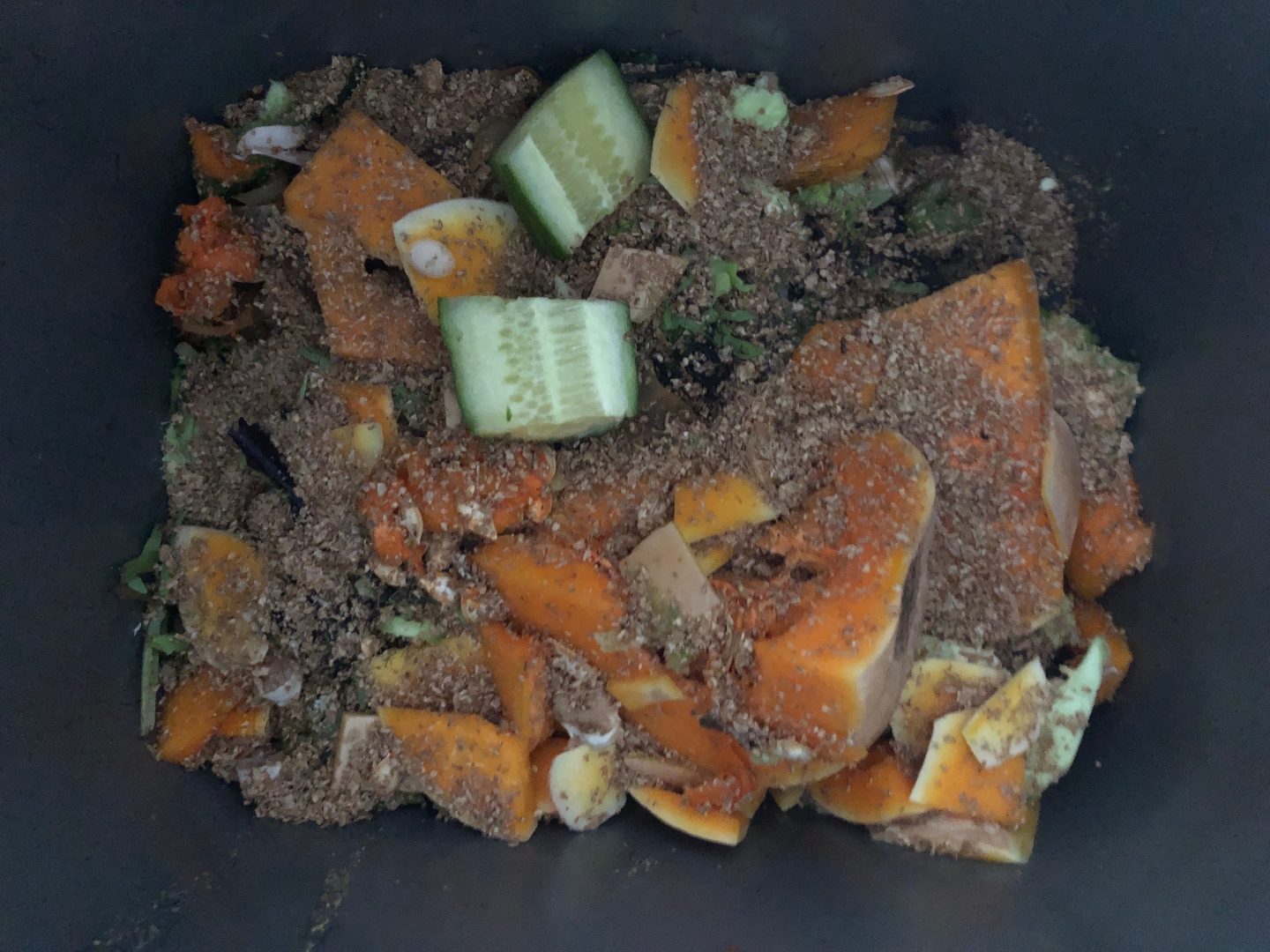
Surprisingly, this doesn’t smell bad (only slightly pickle-esque) and can even be kept indoors if you’re in a small space. Ours live one on the balcony and one in the garage and we rotate as needed. Once you fill one, make sure its lid is secure and leave it for at least 5 weeks to work its pickling magic. After that, you can dig the contents into garden soil, or theoretically, add it to your worm bin. A word of warning here: Dave was a little over-enthusiastic in the early days of bokashi/worm life, and tried to feed too much bokashi waste to the wormery too early in its development.
Bokashi is basically bin pickle, which keeps away the usual nasty bacteria, flies and other vermin, so to reduce the acidity you can sprinkle it with garden lime. Add it a little at a time though, as an over-enthusiastic pH balancing resulted in pickled food waste very quickly turning into a putrid stack of rotting food followed up by a worm massacre and rescue operation.
**Buy the same system we have**
What’s a worm composter?
When Dave first suggested this, I wasn’t keen but actually, I’ve grown to love our little wormies and like to take them their dinner of our waste bits after I’ve finished meal prepping. It works in a similar way to the Bokashi but instead of using anaerobic composting through a bran mix, the worms do the job. They basically eat their way through everything, progressing up through the trays leaving nutrient-rich compost behind them. The product works in the same way too. You get a ‘tea’ which can be fed to plants (tomatoes love it) and compost which can be dug into the soil. A lot of the kits come with a packet of tiger worms and once they’re happy and established, they breed. We have hundreds now, wiggling around in the waste. Sounds gross but it doesn’t smell at all and we love it!
Again, we keep ours on the balcony, it’s bigger than the bokashi and looks like a beehive!
**Buy the same system we have**
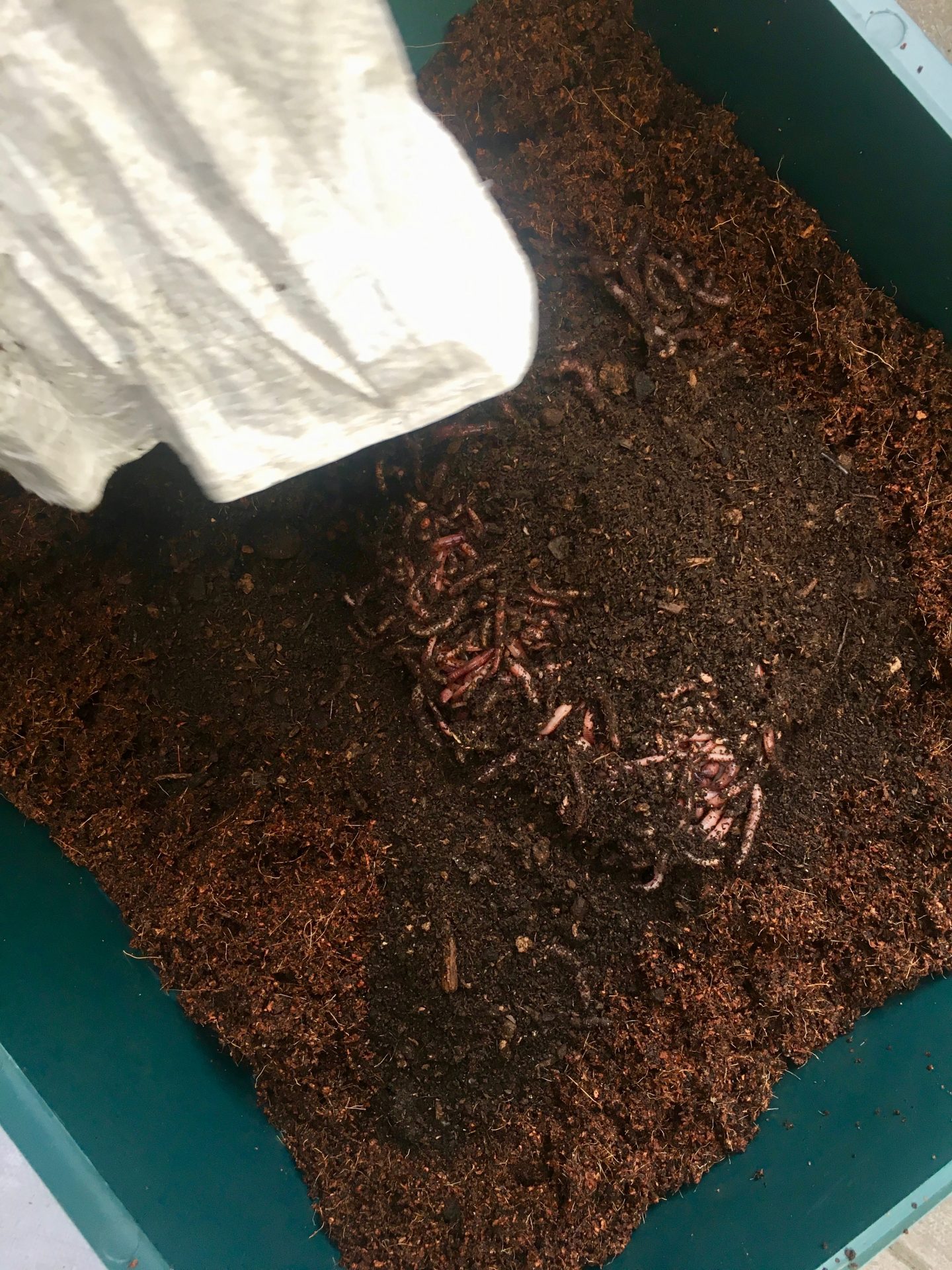
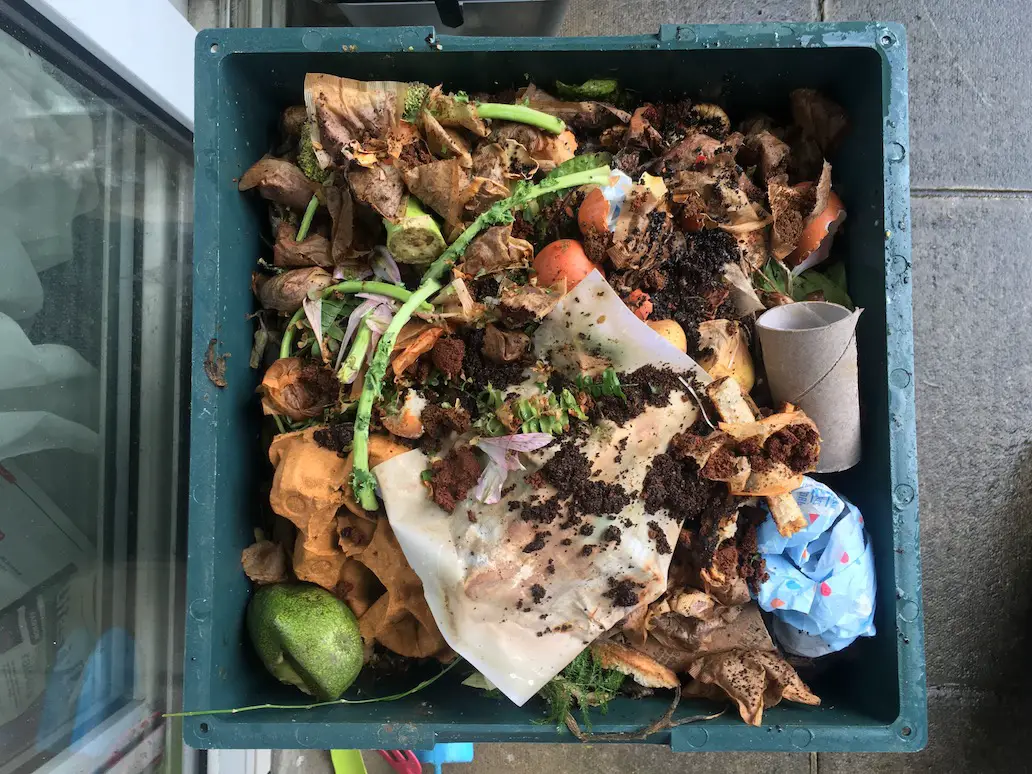
Grow your own
You don’t need a lot of space to grow veggies and herbs at home. This summer we grew potatoes, tomatoes and herbs very successfully on our balcony in pots. It’s just another way to avoid buying big bags of stuff from the shops which could go uneaten and end up in the bin. Don’t know where to start? This page on the grow veg website is a good place to start and the kitchen garden book by Richard Bird also has a brilliant section on small garden spaces as well as loads of advice on what to grow how, when and where.

Leftovers
I won’t talk too much about this here as I write about leftovers all the time. But, it is important to say that this is probably the area in which you can most quickly start to make an impact and move towards that holy grail – a zero food waste life!
Things you can do include:
- Freezing leftover cooked vegetables
- Make crisps with your potato peelings, yes really!
- Freezing milk and cheese
- Freezing portions of food eg. pie/lasagne – providing it’s not been frozen before
- Stock – pour into ice cube trays
- Chillis – and you can use them from frozen
- Herbs on the turn – using an ice cube tray, suspend them in oil and freeze.
I also often use things that are in danger of being wasted, turning them into meals which can be frozen and eaten another time. Perfect for a zero food waste life! Anything in a sauce works well – for example, curry, ratatouille, soups and stews.
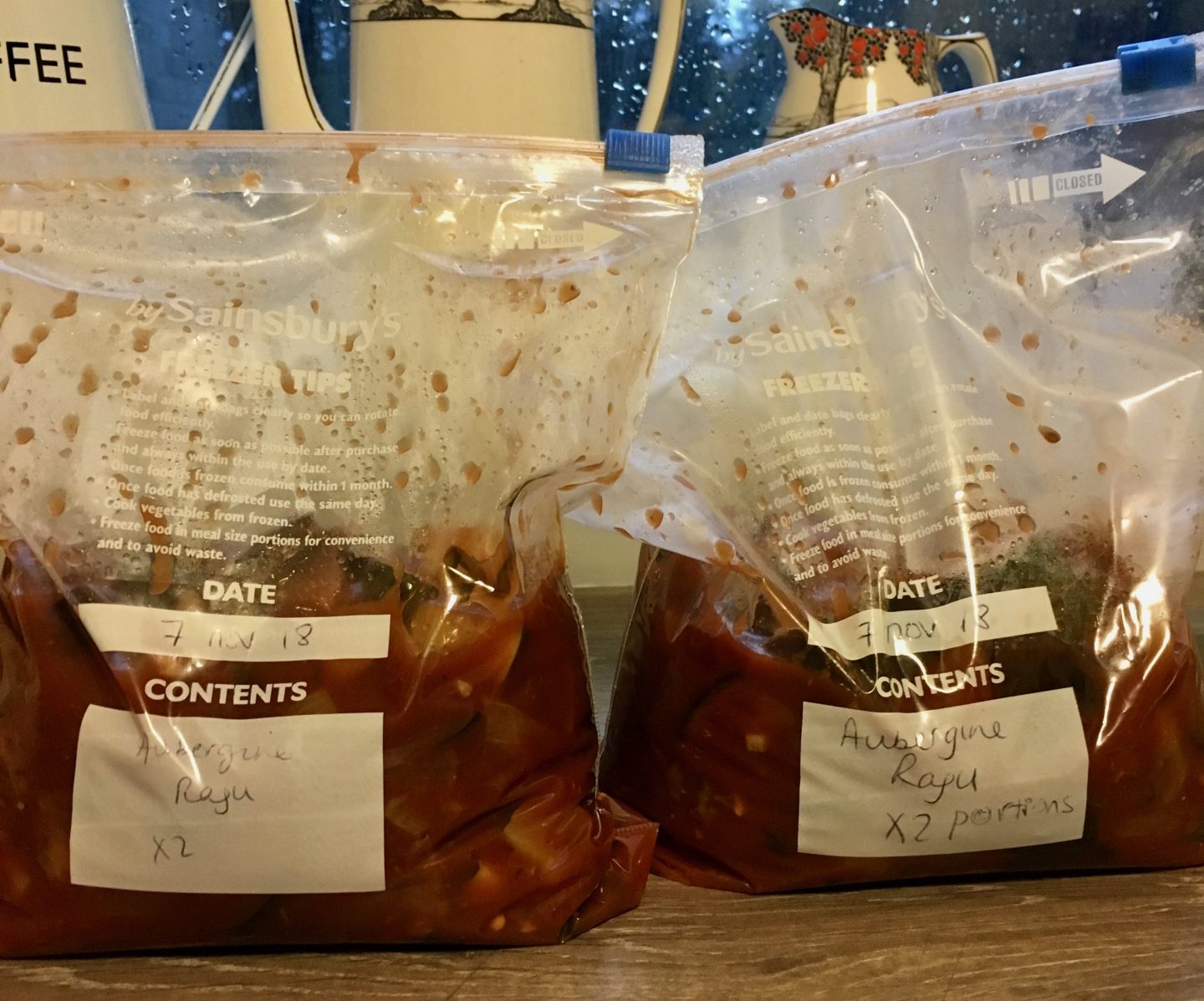
For more inspiration, I use these cookbooks regularly too:
ON A SIDE NOTE – No more packaging!
I’ve started actively avoiding pre-packaged vegetables. This is easier when you shop in greengrocers and small indie shops than the supermarkets but there are ways to get around it. For example, when we go to the supermarket, we buy loose veg. We take a piece of waste paper to stick the little print out barcodes on (rather than bagging and sticking). If your supermarket of choice doesn’t use that system and weighs them at the checkout, you don’t even need the paper. Just stick the veg into the bottom of the trolley loose and then bag it up with the rest of your shopping at the end.
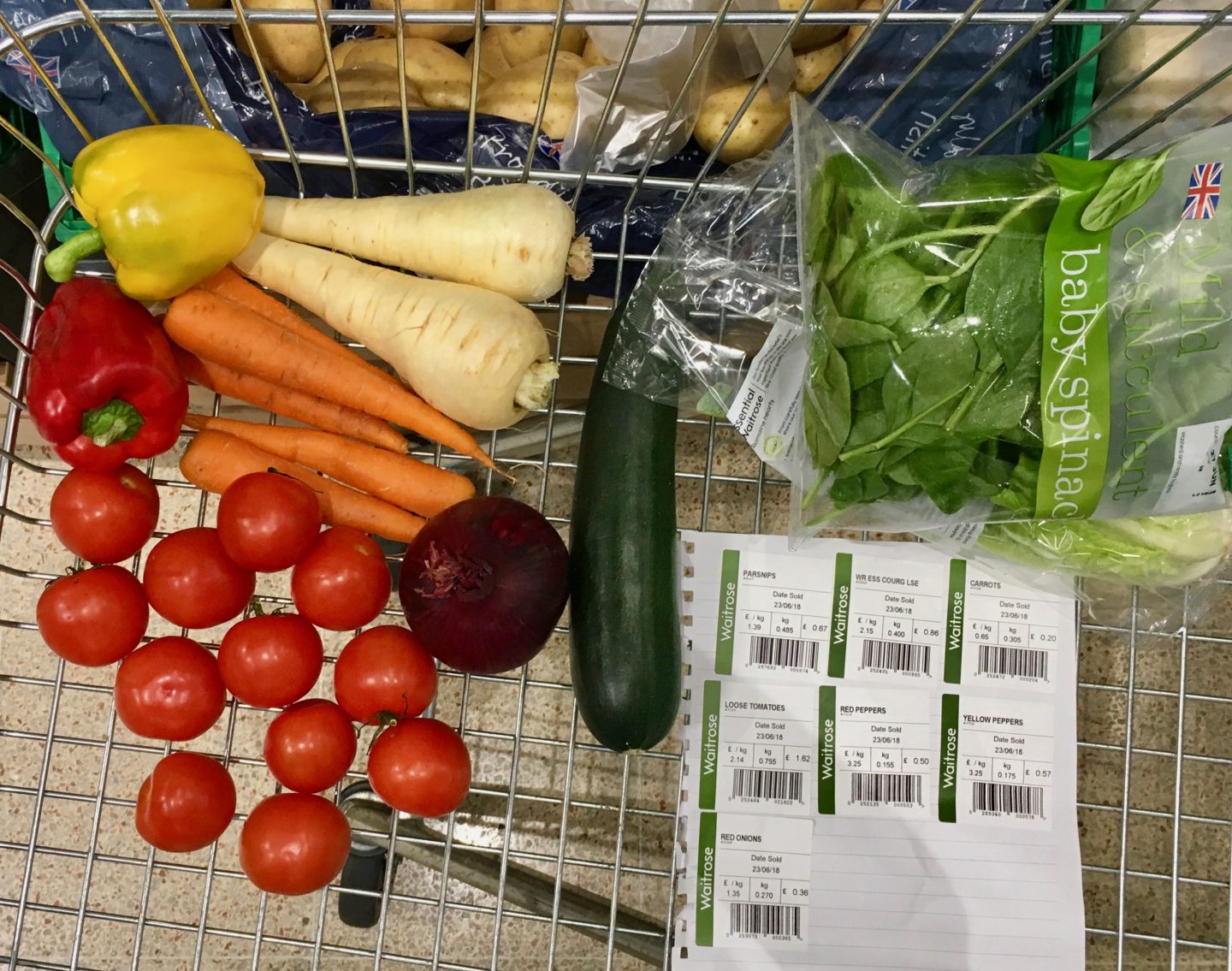
And that’s it. If you made it to the end, thank you for reading. I’d love to hear your own tips and advice for avoiding food waste in your own home. Please do share them in the comments section below.


Excellent post on reducing waste – it’s something I want to be better at as throwing away food makes me so sad and ashamed! I’m defo guilty of buying too much veg because it’s in a convenient bag and then not eating it all. Planning to buy more loose veg and fruit in the future as well as having an “eat what we have in” meal each week so that random bits get eaten rather than lying at the bottom of the fridge for weeks before being binned! Cx
The random meals are the fun ones. We had one last night which was really odd – mushroom burgers, fried rice with peas and honey roasted carrots and parsnips. It was delicious though!
My housemate doesn’t really know what to do with leftovers, so I have regularly been known to fish out her thrown away veg from the bin, if it is still in its wrappers I hasten to add. (It usually is) Celery gets chopped up and frozen for soups, and carrots get chopped for soup, or grated and mxed into cookies and cakes. She threw away a whole block of cheese once because it had a few specks of mold. Rescued it, cut off the specks, and used it for cheese on toast. It stayed good for a week or so once I’d re-wrapped it.
I used to the do the same when I was at university with my housemates! I don’t blame you and I’d still do the same now 🙂 Sounds like you have your food waste habits down to a tee!
This is such a good idea and one that we really need to adopt. As a family of 6 we don’t actually have many leftovers from meals but we do waste a lot of food by not meal planning properly and food fast goes off. I need to try harder to really cut our food waste!
Buying less definitely helps with eating everything up before it goes off but I know it can be harder in a big household! Good luck! 🙂
You do so well reducing your waste! We have a food bin but I love the idea of a bokashi and wormery.
Thanks Jenny, do let me know how you get on if you try either of them!
We are often amazed at how much waste some households produce, especially since we produce far less but are not nearly low as we should be yet. We are lucky that we can shop very regularly, buying just for one day or maybe two. But more to improve. My biggest area of issue is bathroom toiletries. I’m ok with solid shampoo bars but not found a conditioner that works yet so still using those huge plastic bottles. 😰
Dave uses the soaps but I have to admit I prefer the bottles too. Perhaps see if you can find somewhere you can refill them? That’s my plan 🙂
My little family in India is slowly and steadily working towards a sustainable, more eco-friendly way of life, I’m happy to report. Reducing food waste is one of the steps we are working hard on – as Indians, not wasting food is ingrained in our systems, we are really stepping up on it now. Some excellent pointers here! Thank you for this wonderful, detailed post. 🙂
That;s great to hear, I’m sure I could learn some tips from you too! Glad you enjoyed my post. 🙂
I am utterly impressed and inspired! I do try my best to avoid too much food-waste – but I could be better. Thank you for all your tips and advice. A wormcomposter is going to be made in the garden for sure
Louise x